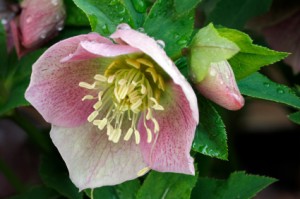Hellebore
The botanical name for the Hellebore is Helleborus but it is more commonly referred to as the Christmas Rose. It was given this name according to a legend that it sprang out of the ground from the tears of a young girl who had no gift to give to Jesus Christ.
Description
The Helleborus has large flowers which are shaped like a bowl. The petals have a translucent appearance and dotted stamens which have pointed, delicate leaves. The stems are olive-green in colour and only reach a height of approximately 20cm, resulting in a somewhat dainty overall appearance.
Habitat
Helleborus is now cultivated all over the world, with specialists producing the flowers in Japan, Australia, New Zealand and Europe. The flower’s origins are hard to specify, but its ancestors have been found growing naturally from South Asia to the west coast of the Mediterranean Sea.
Availability
There are two ways of propagating the Helleborus – by seed or by division. You can plant seeds in a pot when they are ripe and then place in a cold frame. Alternatively, divide the plant after it has flowered, in the spring or summer. The Helleborus flowers between November and February.
Species
The Helleborus belongs to the Ranunculaceae family. There are three varieties of cut flowers. The Helleborus niger has flowers in either a deep, warm purple or a bright pure white. The Helleborus corsicus has cream or green bell-shaped cups and the Helleborus orientalis has streaked or speckled flowers in striking shades of green, cream, purple and pink.
Care Tips
Once cut, hellebores do not last for long. It is best to provide them with a good drink of water before arranging. They will also live longer if kept cool. The black roots of Helleborus niger are highly poisonous so it is important to wash your hands after handling them.
If you are planting them out, choose a spot which is sheltered and partly shaded. They perform best in moist and fertile soil which is well drained and alkaline to neutral in composition. An ideal combination is heavy clay soil set in an area which has partial shade. They benefit from annual mulch, which should be done in the autumn.
Did You Know?
Hellebore contains particles of Protoanemonin, which can cause sneezing and irritation. In folklore, these particles were believed to help people ‘sneeze out’ evil spirits.
References
http://apps.rhs.org.uk/plantselector/plant?plantid=947
http://www.bbc.co.uk/gardening/plants/plant_finder/plant_pages/383.shtml
http://www.helleborus.de/engl/mythology.htm



